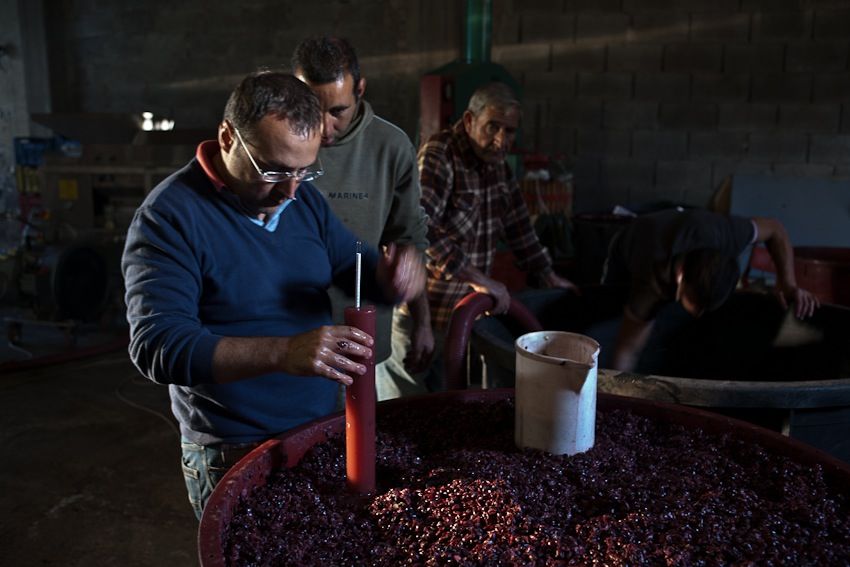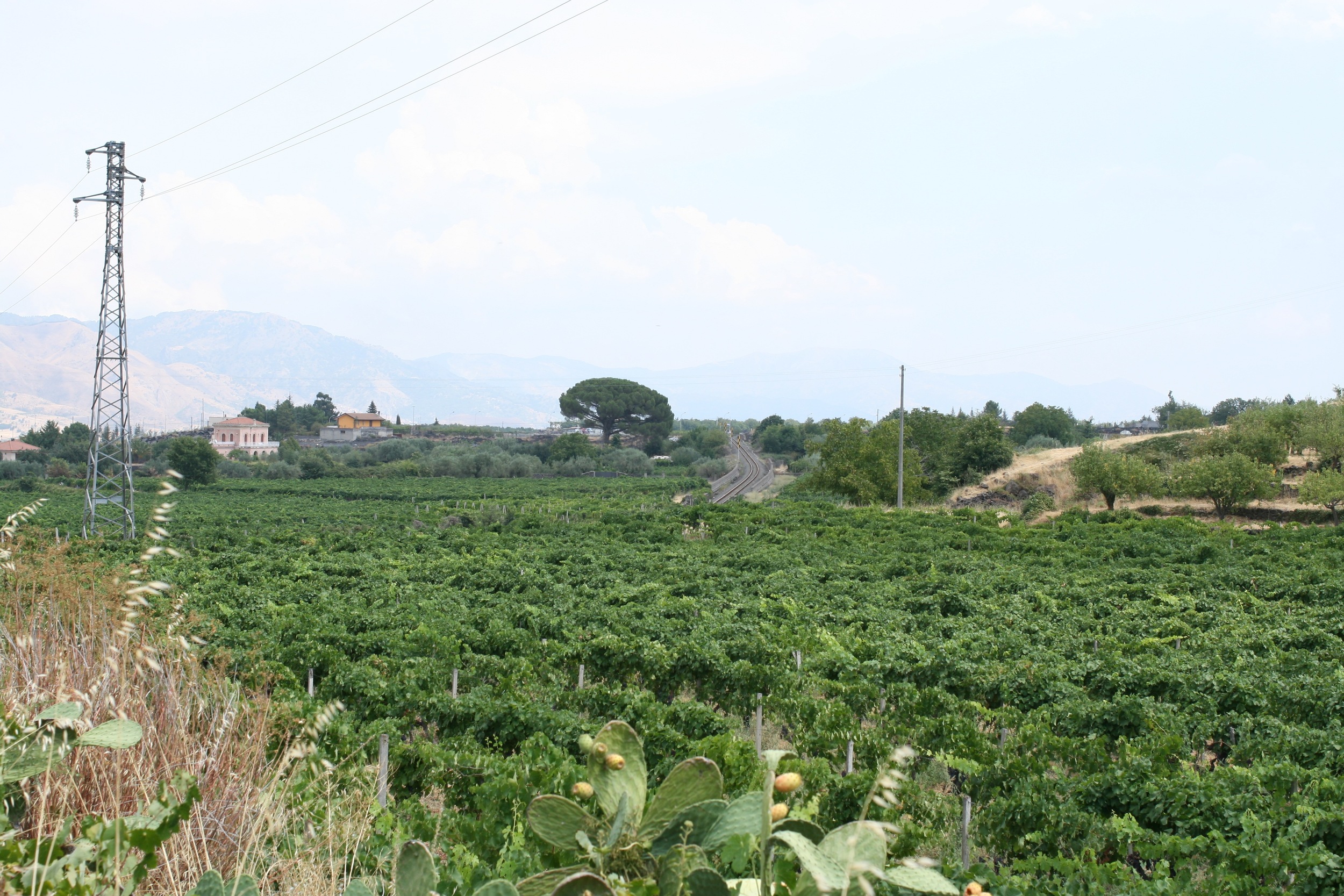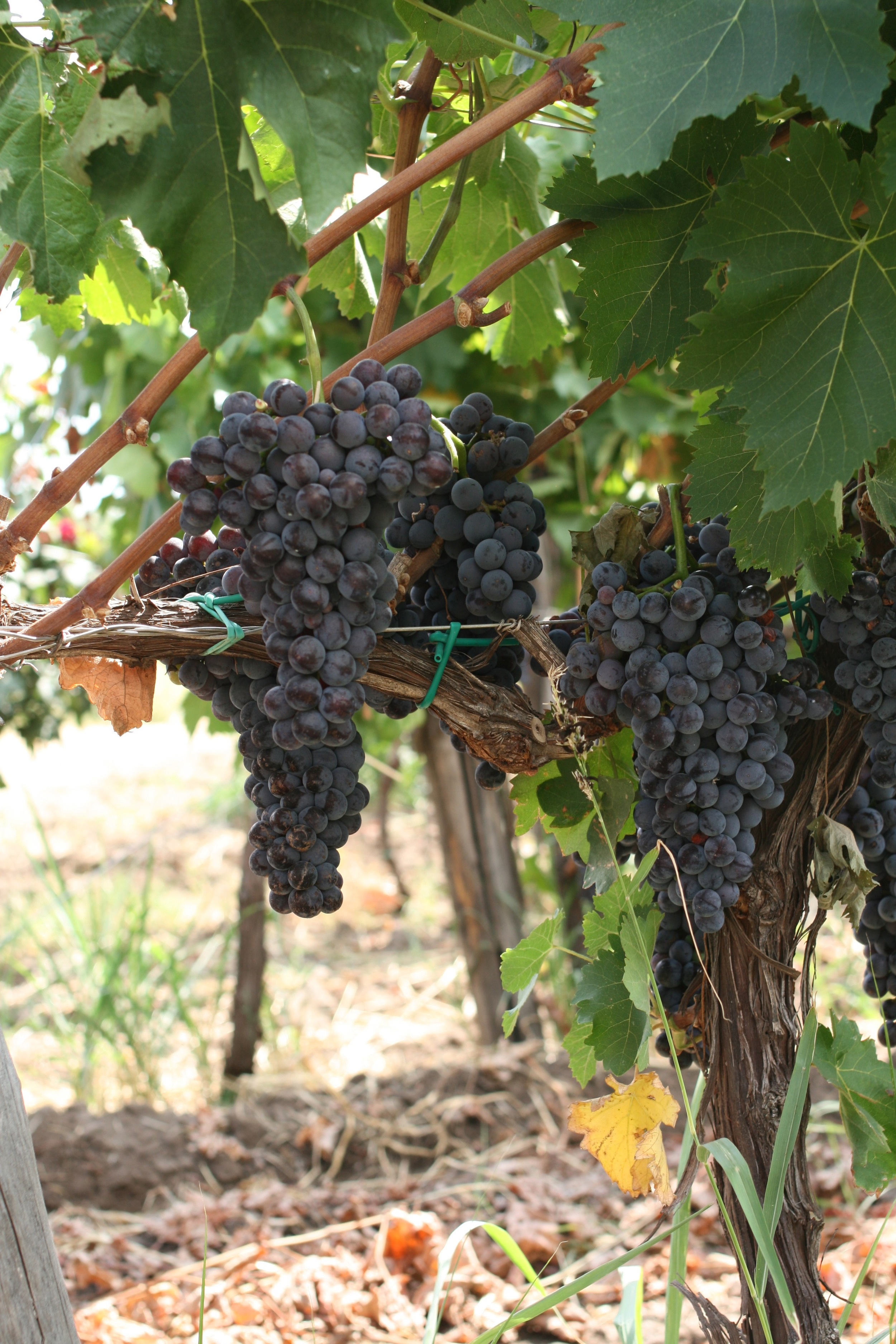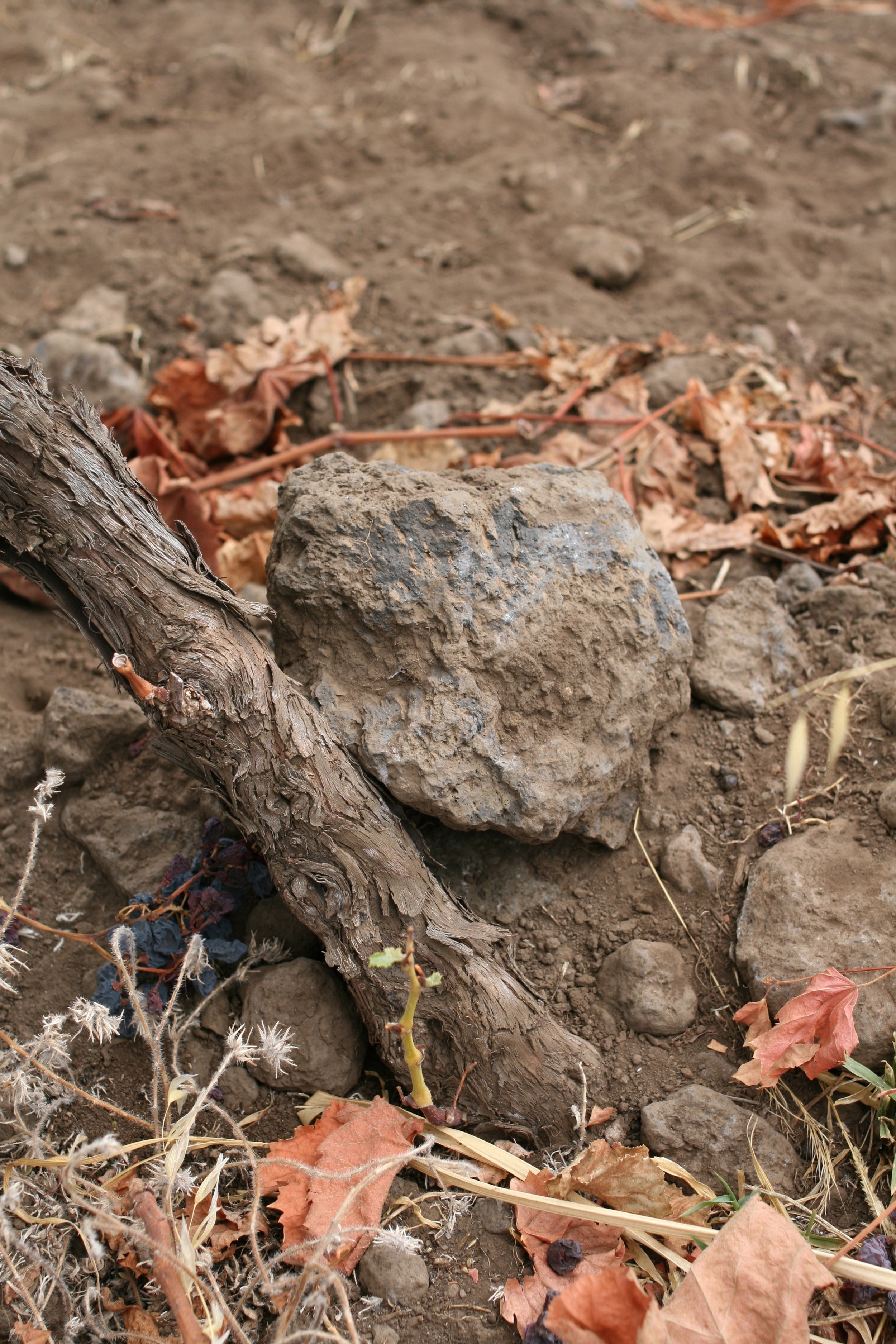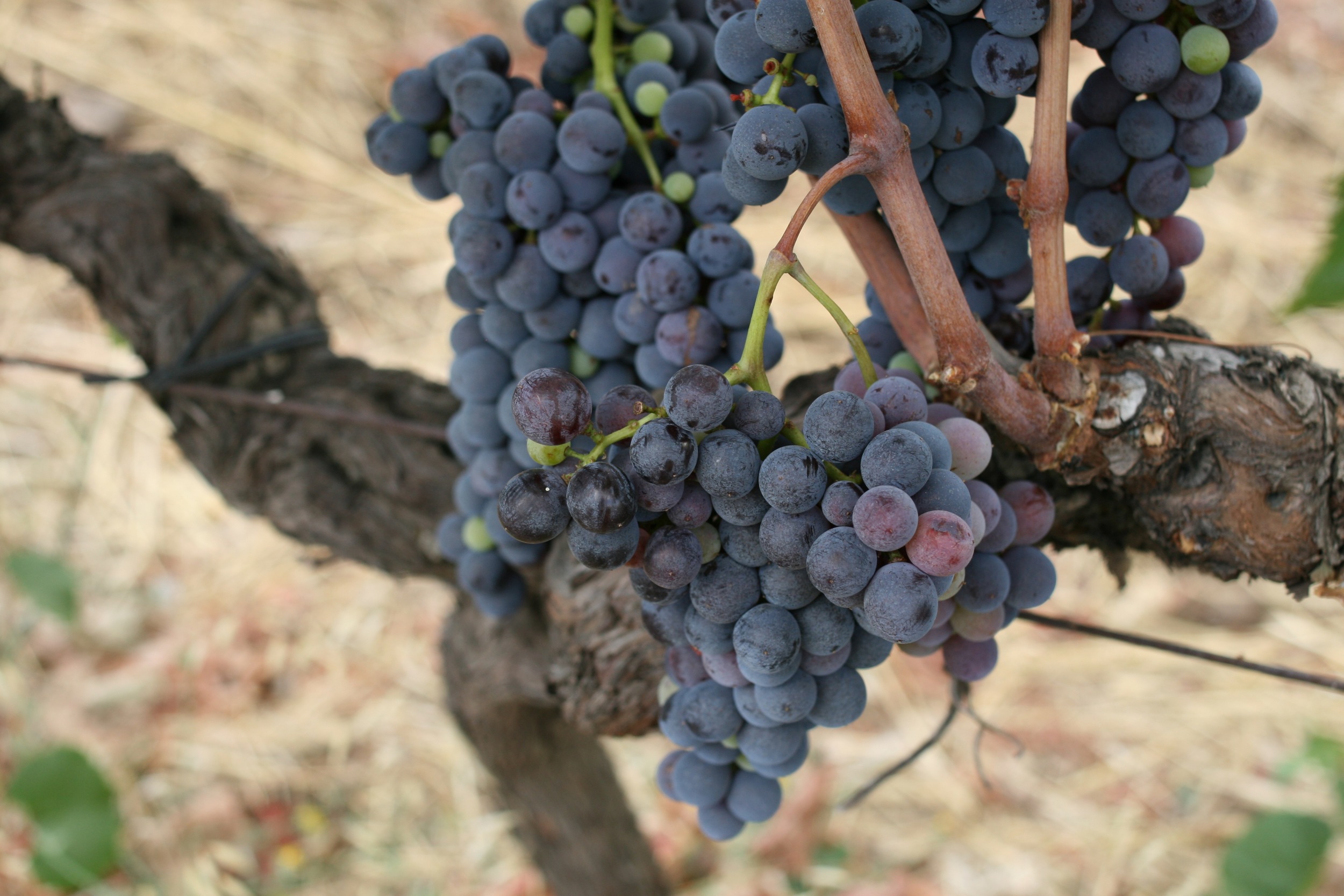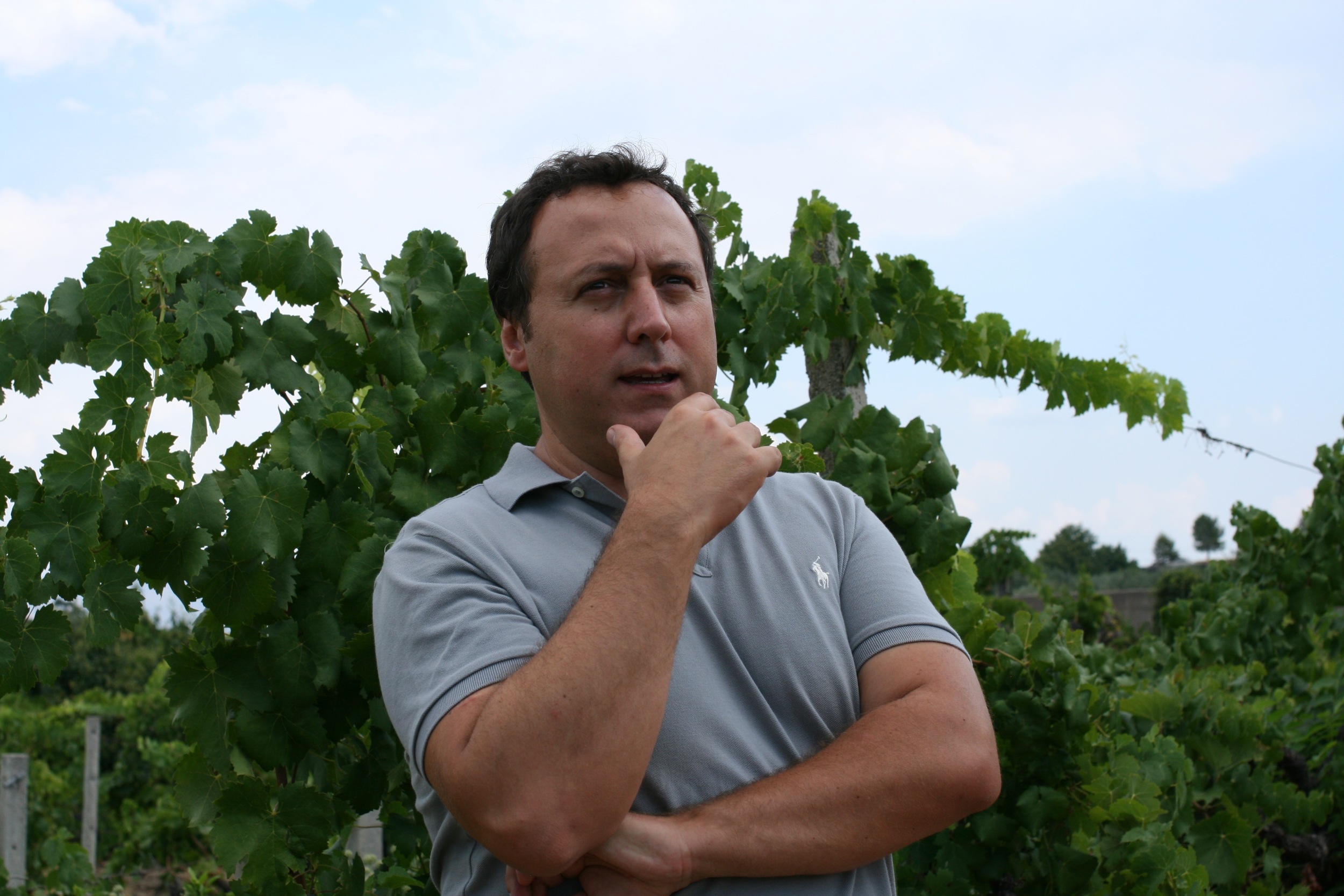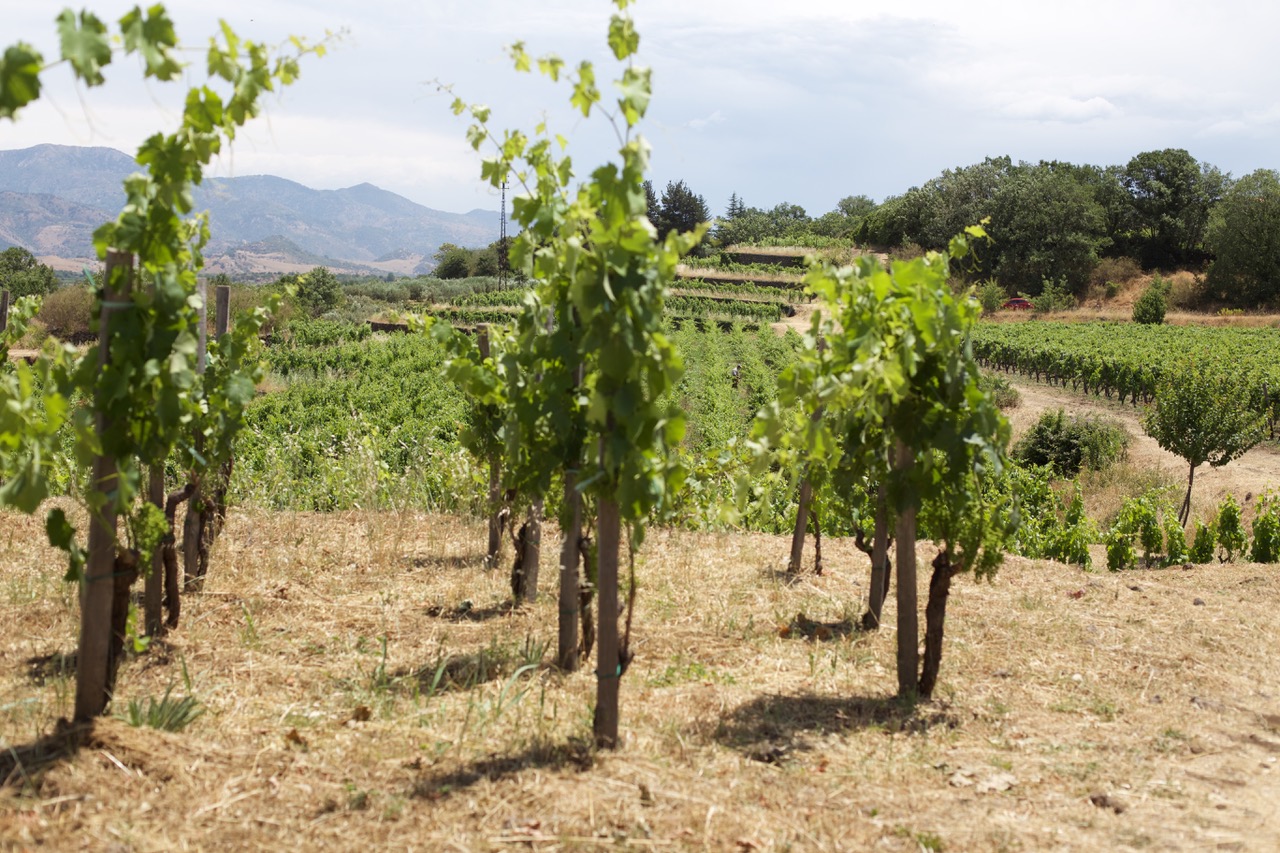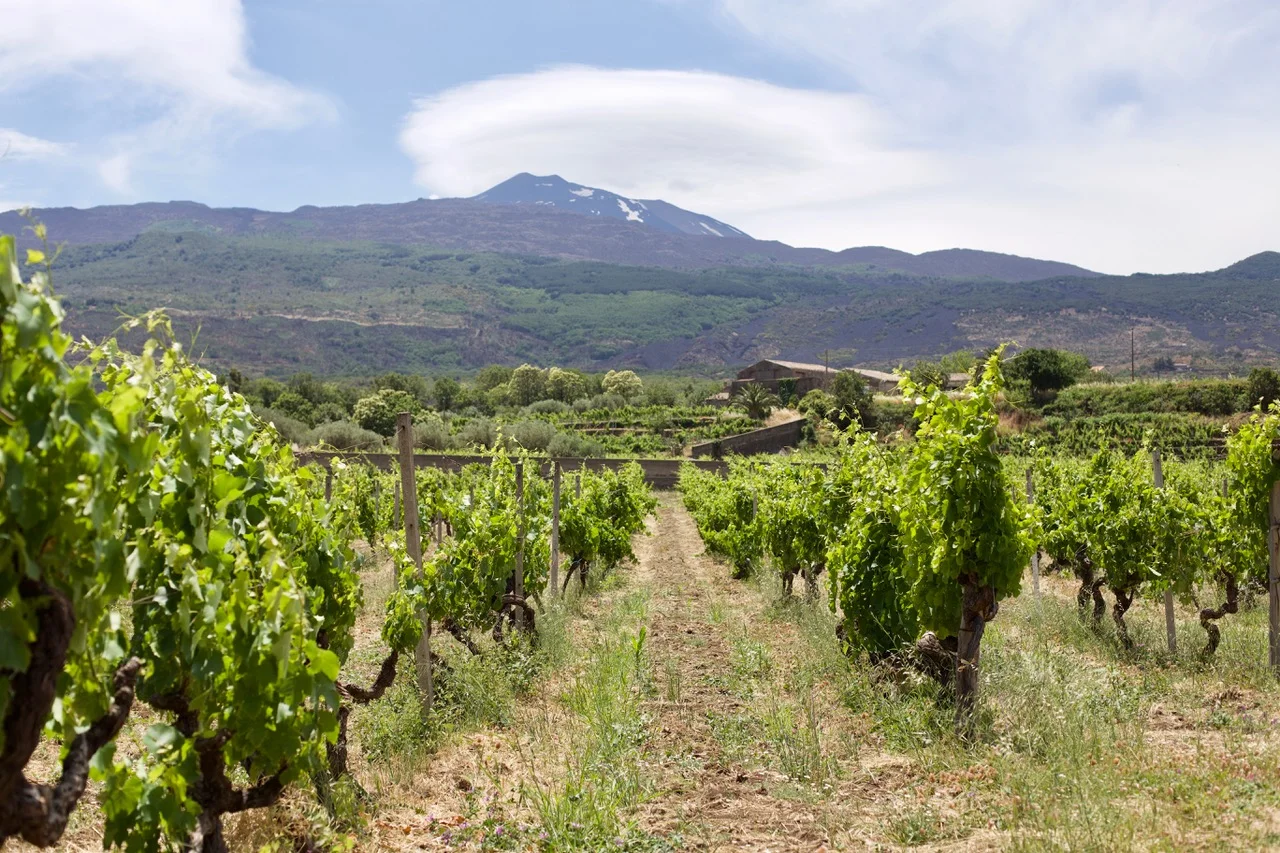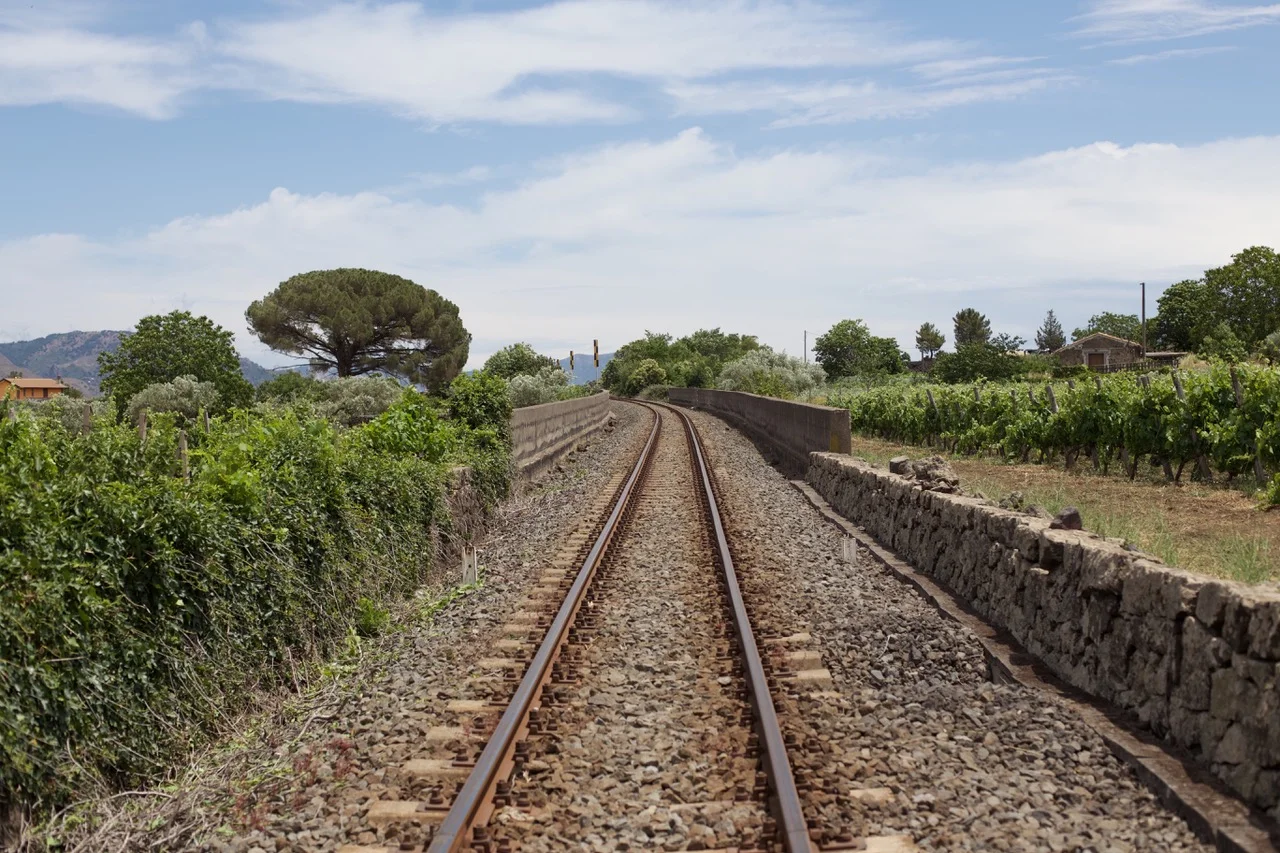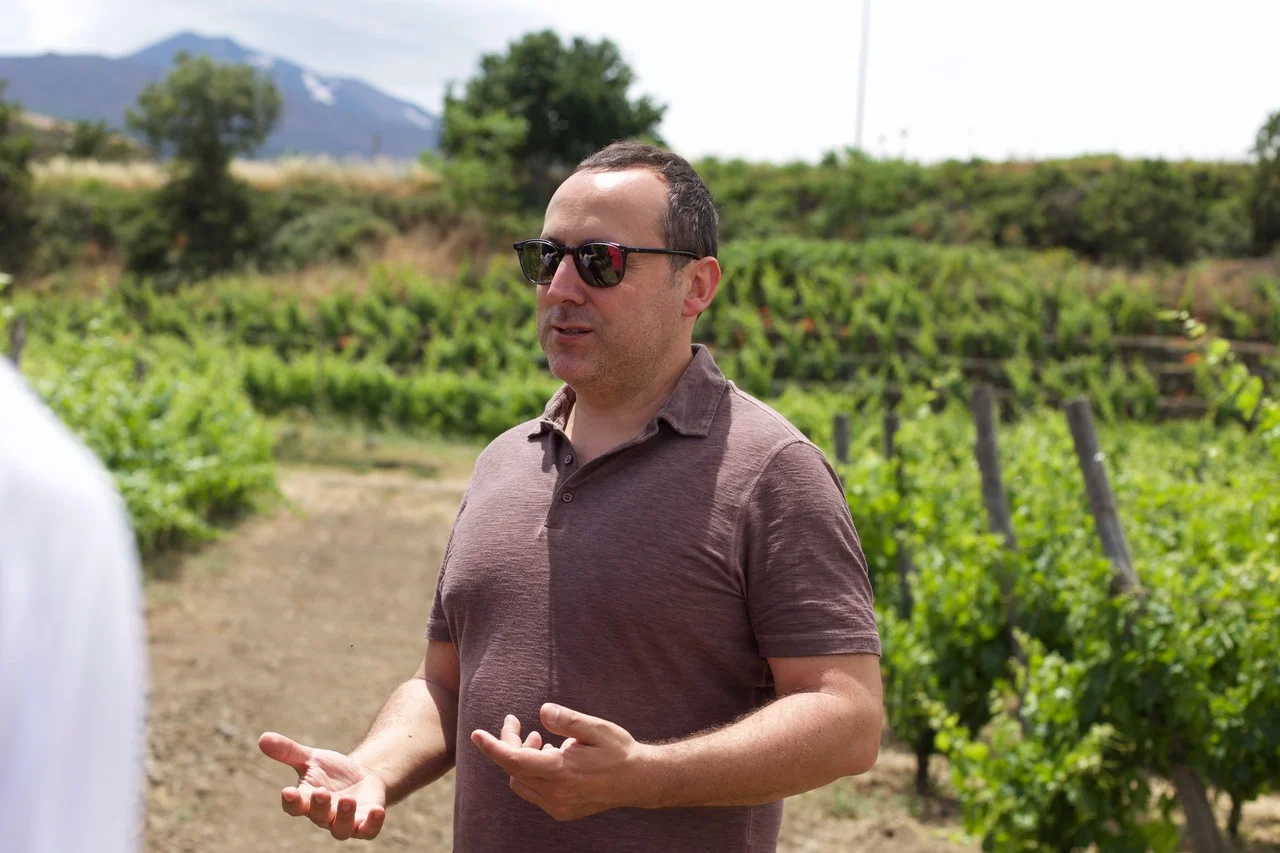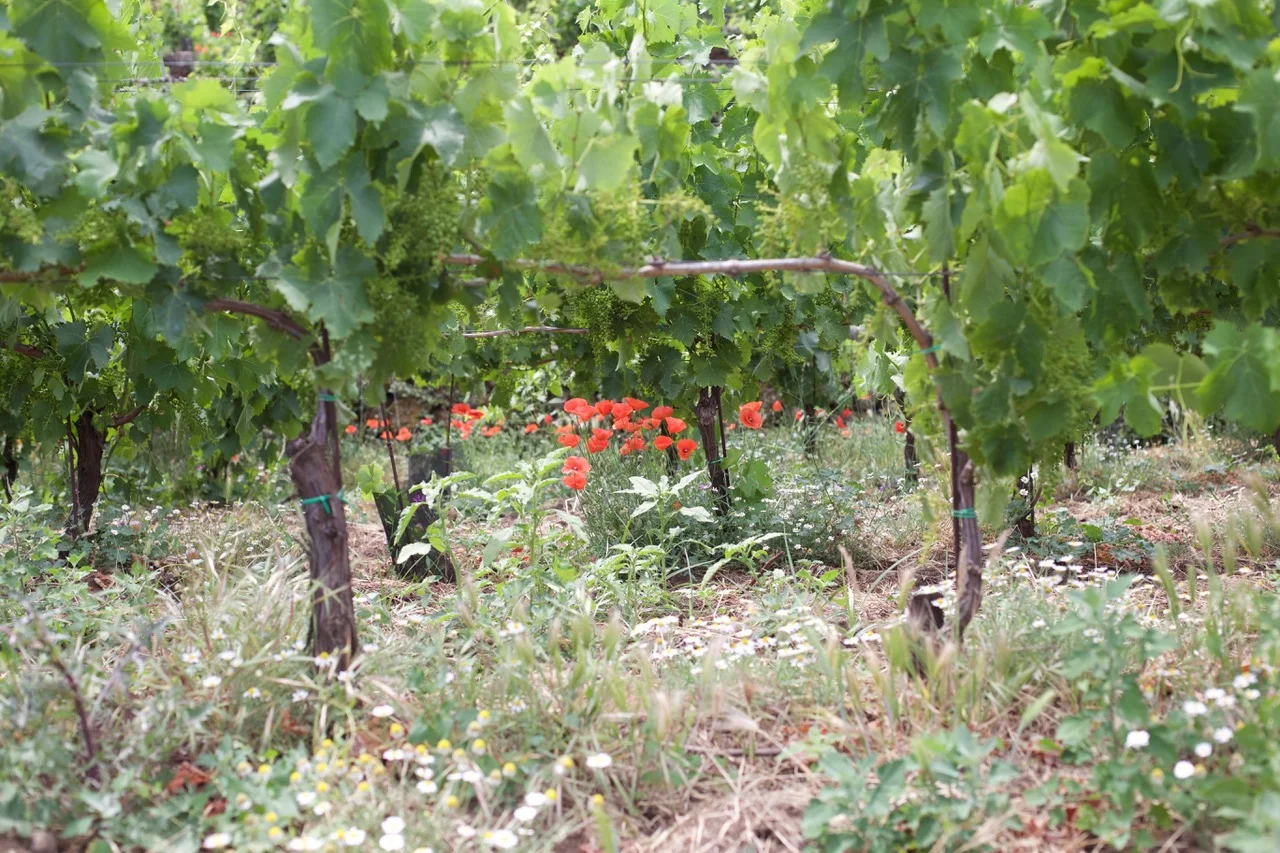Girolamo Russo
_____________________________________________
Organic viticulture
Three single-vineyard expressions of Northern Etna Rosso
Many old, ungrafted vines
_____________________________________________
ABOUT Girolamo Russo:
Giuseppe Russo had been studying to be a pianist when his father Girolamo died unexpectedly in 2005. He then came back home to Mount Etna to take over the family vineyards. Since that time he has been organically farming these old vines, some of them more than 100 years old, and he has restored the old cellar under his house. He has 15 hectares of vines on the North side of Etna, around the town of Passopisciaro, including pieces of some famous ‘contrade’, as the historic localities are known here. For Pinot Noir and Nebbiolo lovers, Nerello Mascalese is an exciting discovery. It can produce reds of impressive subtlety and structure, drinkable when young and even better with a few years of age.
Giuseppe’s vineyards are planted on ancient lava flows called ‘sciare,’ which vary in age, mineral content and topsoil composition, with underground pockets that allow water retention to keep the vines hydrated during the heat of the summer. The solid rock of these lava flows breaks down over time, eventually becoming loose enough that a plant’s roots can penetrate. All of the Etna DOC is at relatively high elevation for red wines, more than 500 meters above sea level; to some extent the elevation counteracts the effect of latitude, in terms of the mesoclimate around the vineyards.
Russo makes a range of Etna red wines, all made almost entirely of Nerello Mascalese. A’Rina is his estate wine, made mostly from fruit from his younger vines. Then he produces five wines from single ‘contrade,’ San Lorenzo, Feudo, Calderara Sottana, Feudo di Mezzo, and Feudo di Mezzo ‘Piano delle Colombe.’ Russo also makes an Etna Rosato from Nerello Mascalese and two Etna Bianco bottlings made mostly of Carricante, with other local white varieties. In the years that we have been dealing with Giuseppe these wines have gone from afterthoughts to excellent, and I find whites and rosés from Etna to be among the best wines of their type in all of Italy.
_____________________________________________
The WINES:
Etna Rosato
Made entirely of old-vine Nerello Mascalese grown in the San Lorenzo contrada. The grapes are harvested manually at the beginning of October; the whole bunches is pressed, which takes about five hours, allowing for some extraction of color and flavor from the skins. Fermentation takes place in stainless steel tanks, using indigenous yeasts, at controlled temperature. The wine is then aged in tank for about six months, then filtered and bottled. About fifteen thousand bottles are produced each vintage.
Nerello Mascalese makes great rosé here on Etna, one of the best in Italy. This one shows the classic aromas and flavors of watermelon and strawberries, with maybe a hint of true cinnamon; on the palate it is very fresh, and the balance between acidity and fruit depth is very attractive. This is a versatile food wine, I drink it with salmon, roast chicken, pork, tacos, or if you are lucky, Giuseppe’s mother’s Pasta alla Norma, which is indescribably good. Lesser rosés need to be drunk up before the end of the following year, but not wines like this, which improve with up to a year or two of age and keep well beyond that.
etna bianco ‘nerina’
Made of a field blend of 75% Carricante and 25% a mixture of other typical white varieties found on Etna: Catarratto, Inzolia, Grecanico, Minnella, and Coda di Volpe. The Carricante comes from San Lorenzo, the other varieties were interplanted with red varieties in a number of different vineyards, which range in elevation from 650 to 800 meters (2,100-2,600 feet) above sea level. The vines are partly old (planted 50-100 years ago) and partly younger. The grapes are pressed, and the must is fermented at controlled temperature, using indigenous yeast, in used puncheons (about 1/3) and stainless steel tanks. No malolactic is carried out, and the wine is aged in the same containers on the fine lees for about six months. Ten thousand bottles produced.
White wines grown on Mount Etna are some of the best in Italy, and this is a very good example. Bright pale yellow in color; restrained aroma and flavor of green apple, wet stones, various herbs, and a hint of lemon peel. Bright fresh acidity, long finish; drinkable on release but will certainly improve with up to five years or more of aging in the bottle.
Etna Bianco ‘San Lorenzo’
Made of a field blend from a single vineyard planted to 90% Carricante, the remaining 10% being other indigenous varieties including Catarratto and Grecanico. The vines were planted in about 1940, in the midst of red vines, at an elevation of about 750 meters (2,450 feet) above sea level. The fruit is harvested in the first half of October; after letting the grapes sit for about four hours to extract flavor from the skins they are pressed off, and the must is fermented and aged in used barriques and a used puncheon for about six months. One thousand two hundred bottles produced.
White wines from Etna are some of the most interesting in all of Italy, and this is a great example. The structure given to the wine by the Carricante grape reminds me of Chablis, which is weird given how far south this is, but there you are. This wine shows a bright pale yellow color; subtle but distinct aromas of wet stones, green apple, citrus peel, and mint; very long and fine on the palate. ‘This one goes to 11.’ Drinks pretty well on release but will be excellent with a few years in the cellar. Roast chicken or shrimp pasta come to mind.
Etna Rosso ‘A Rina
All estate bottled fruit from a combination of Giuseppe’s different sites, roughly 90% Nerello Mascalese with 10% Nerello Cappuccio, all planted using massal selection. Vines range from 20 to 100 years of age, rooted in weathered volcanic lava flows on the north side of Mount Etna, head-trained or modified head-trained. Elevation is between 650 and 800 meters (2150-2600 feet) above sea level, very high for red wines.Yields are very low, less than two tons per acre; the grapes are picked, by hand in late October, brought to the cellar in Passopisciaro, mostly de-stemmed, crushed, and fermented using indigenous yeasts. The skins are macerated in the wine for a total of about ten days before pressing. Malolactic fermentation takes place spontaneously in the spring, when the weather warms up; the wine ages in 2,600 liter barrels and concrete tanks for about a year before bottling.
Broad red color, looks rather like Grenache. Aroma and flavor of red fruits (red plum, sour cherry, et cetera), almond, herbal hints including mint, slightly floral. Broad and generous on the palate, with some fine tannins to balance the abundant red fruits. This will age for at least 5-10 years in the cellar, but it’s so good on release that I doubt I’ll be aging it. About forty thousand bottles produced in a normal vintage.
ETNA ROSSO Feudo
Made of Nerello Mascalese with about 5% Nerello Capuccio, grown in the ‘contrada’ of Feudo (Randazzo) at about 650 meters (2,130 feet) above sea level, very high for red wines. Soil is an old, weathered lava flow. The vines were planted by massal selection in the 1950s; yields are very low, less than two tons per acre; the grapes are picked by hand in late October, brought to the cellar in Passopisciaro, mostly de-stemmed (perhaps 20% of bunches left whole if the stems are ripe), crushed, and fermented using indigenous yeasts. The skins are macerated in the wine for a total of about fifteen days before pressing. Malolactic fermentation takes place spontaneously in the spring, when the weather warms up; the wine ages in used 2,600L casks for about eighteen months before bottling. Four thousand bottles are produced in a normal vintage.
Broad red color. Giuseppe’s notes include ‘blackberry, currant and Morello cherry, mediterranean herbs, sandalwood, leather and tobacco leaf,’ and I think he’s right. Elegant fine tannins, drinkable when young but I am looking forward to following this for at least ten years.
Etna Rosso 'Feudo di Mezzo'
Made of Nerello Mascalese with less than 5% of Nerello Capuccio, grown in the ‘contrada’ of Feudo di Mezzo (Castiglione di Sicilia) at about 670 meters (2,200 feet) above sea level, very high for red wines. Soil is an old, weathered lava flow. Yields are very low, less than two tons per acre; the grapes are picked by hand in late October, brought to the cellar in Passopisciaro, mostly de-stemmed (perhaps 20% of bunches left whole if the stems are ripe), crushed, and fermented using indigenous yeasts. The skins are macerated in the wine for a total of about fifteen days before pressing. Malolactic fermentation takes place spontaneously in the spring, when the weather warms up; the wine ages in 1,000 liter barrels and used puncheons for about eighteen months before bottling. About two thousand bottles two hundred bottles are produced in a normal vintage.
Calderara Sottana
Made of Nerello Mascalese with about 5% Nerello Capuccio, grown in the ‘contrada’ of Calderara Sottana (Randazzo) at about 700 meters (2,300 feet) above sea level, very high for red wines. The vines were planted by massal selection in the 1970s; yields are very low, less than two tons per acre; the grapes are picked by hand in late October, brought to the cellar in Passopisciaro, mostly de-stemmed (perhaps 20% of bunches left whole if the stems are ripe), crushed, and fermented using indigenous yeasts. The skins are macerated in the wine for a total of about fifteen days before pressing. Malolactic fermentation takes place spontaneously in the spring, when the weather warms up; the wine ages in used puncheons for about eighteen months before bottling. About eighteen hundred bottles are produced in a normal vintage.
Etna Rosso 'San Lorenzo'
Made mostly of Nerello Mascalese with a little Nerello Capuccio grown in the ‘contrada’ of San Lorenzo (near Randazzo) at between 750 and 780 meters (2,450-2,600 feet) above sea level, which is very high for red wines. Soil is an old, weathered lava flow. The vines were planted by massal selection between the 1920s and the 1950s; yields are extremely low, less than two tons per acre; the grapes are picked by hand in late October, brought to the cellar in Passopisciaro, mostly de-stemmed (perhaps 20% of bunches left whole if the stems are ripe), crushed, and fermented using indigenous yeasts. The skins are macerated in the wine for a total of about fifteen days before pressing. Malolactic fermentation takes place spontaneously in the spring, when the weather warms up; the wine ages in used 2,600L barrels for about eighteen months before bottling. Four thousand bottles are produced in a normal vintage.
Similar fruit notes to the other ‘cru’ wines, but somewhat more serious structure, should age beautifully. Cherry, forest-floor, leather, tea-like tannins on the palate. Excellent.
San Lorenzo ‘Piano delle Colombe’
Made entirely of Nerello Mascalese grown in the ‘contrada’ of San Lorenzo (near Randazzo) at about 750 meters (2,450 feet) above sea level, which is very high for red wines. Soil is an old, weathered lava flow. ‘Piano delle Colombe,’ which means ‘plain of doves,’ is a specific piece of Giuseppe’s vineyard in San Lorenzo. The vines were planted by massal selection in the 1940s; yields are very low, less than two tons per acre; the grapes are picked by hand in late October, brought to the cellar in Passopisciaro, mostly de-stemmed (perhaps 20% of bunches left whole if the stems are ripe), crushed, and fermented using indigenous yeasts. The skins are macerated in the wine for a total of about eighteen days before pressing. Malolactic fermentation takes place spontaneously in the spring, when the weather warms up; the wine ages in one used barrique and one used puncheon for about eighteen months before bottling. About 750 bottles are produced in a normal vintage.
As you’d imagine this is somewhat similar to the San Lorenzo, but with the volume turned up. Red fruits, leather, sandalwood, hugely aromatic; equally impressive on the palate, the biggest of all the reds here but not at all bitter, still elegant. Amazing raw material vinified so as to show off the raw material, not the winemaking: no flaws, no flashy oak, just class. Bravo Giuseppe!
_____________________________________________
more information:
Visit Girolamo Russo website
Vineyard Tour with Giuseppe Russo
